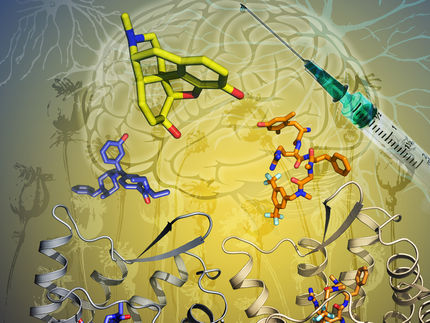Prescriptions for opioids stabilizing after fivefold increase in 10-year span
Effectiveness of prescription drug monitoring programs varies by state
Death rates from opioids have been soaring in the U.S. since the 1990s. To support the appropriate use of these controlled substances and inform public health interventions to prevent drug abuse, most states have implemented a prescription drug monitoring program (PDMP). In a latest study, researchers at Columbia University's Mailman School of Public Health evaluated the impact of these state-wide programs and found that after tripling until 2007, annual rates of prescriptions for opioid analgesics have stabilized although the effects of PDMPs on opioid dispensing vary markedly by state. Findings are published in Public Health Reports.
The researchers used quarterly data on prescription opioids from the US Drug Enforcement Administration's Automation of Reports and Consolidated Orders System for the years 1999-2008 to analyze the impact of the program nationally and at the state level. Data were then converted to morphine milligram equivalents or MMEs for each state and the District of Columbia. Results were based on data for the seven most commonly distributed opioid analgesics: fentanyl, hydrocodone, hydromorphone, meperidine, methadone, morphine, and oxycodone.
From 1991 to 2010 the annual number of prescriptions for opioid analgesics in the U.S. almost tripled, from about 76 million to almost 210 million, and the annual MMEs per capita increased fivefold from 163 to 827 for the years 1999 to 2008. Until 2007, the annual number of MMEs dispensed per capita increased progressively before stabilizing, and through 2008, state PDMPs had no discernible impact on the overall MMEs dispensed per capita. However, when the researchers examined data for individual states, they found that nine states recorded significantly fewer MMEs dispensed after implementing their PDMPs, 14 states reported no significant change, and eight states experienced significant increases in the MMEs dispensed. Colorado had the greatest PDMP-associated decrease in MMEs -- 66.4%, followed by Texas (54%) and Wyoming (48%). The largest increase in MMEs – 61% -- was in Connecticut. Overall, the MMEs dispensed per capita were lower in the Midwest than in the Northeast.
"We found that PDMPs administered by state health departments appeared to be more effective than those administered by other government agencies, such as the bureau of narcotics and the board of pharmacy, " said senior author Guohua Li, MD, DrPH, Mailman School of Public Health professor of Epidemiology and director of the Center for Injury Epidemiology and Prevention. Seven states with monitoring programs governed by a state department of health dispensed nearly 18% fewer MMEs than states without the program.
"All age groups have been affected by the epidemic of prescription drug misuse, but the consequences of opioid analgesic misuse are particularly striking in adolescents and young adults," said Joanne Brady, who is a PhD candidate in epidemiology.
"While state prescription drug monitoring programs have greatly expanded and rates of opioids dispensed are stabilizing, there exists considerable room to improve the overall effectiveness of state PDMPs, such as increasing interstate data sharing and making prescription drug-dispensing information accessible by healthcare providers in real time."
Dr. Li, who is also a professor of anesthesiology, stresses the importance of having access to information about the monitoring programs and their impact on the prescription rates for opioid analgesics. "The data can help guide additional research for identifying which characteristics of the state programs are effective and which are not, and inform public policy for improving state prescription drug monitoring programs."
Other news from the department science

Get the life science industry in your inbox
From now on, don't miss a thing: Our newsletter for biotechnology, pharma and life sciences brings you up to date every Tuesday and Thursday. The latest industry news, product highlights and innovations - compact and easy to understand in your inbox. Researched by us so you don't have to.




















































